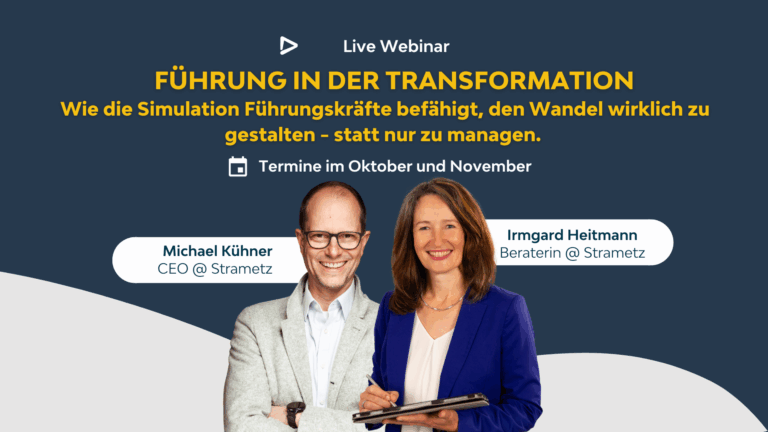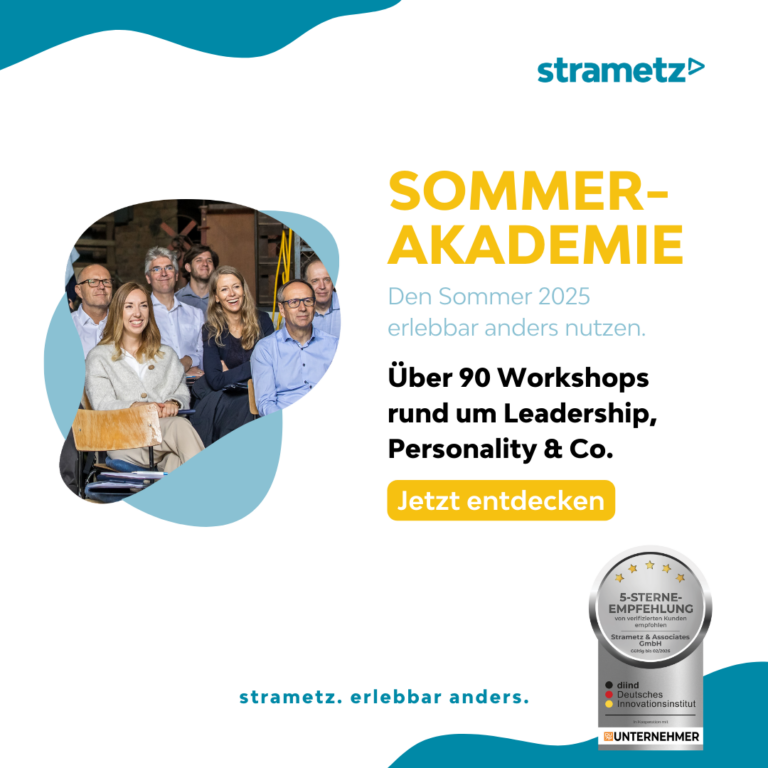What procedures are there in personnel diagnostics and what can they be used for?
After we have illuminated the biggest misconceptions in the use of aptitude tests in our series “Myths of Personnel Diagnostics” and thoroughly proved that:
- the implementation of aptitude tests are not only useful in large companies (Myth I)
- Aptitude tests, if used correctly, can certainly capture personal complexity (Myth II)
- aptitude tests do not, as many claim, scare off applicants (Myth III)
- Aptitude tests are not a pressure tool of personnel diagnostics (Myth IV)
- not all aptitude tests are transparent and manipulable (Myth V)
- Aptitude tests can reliably predict a participant’s career success (Myth VI).
we would now like to explore the question of what personnel diagnostic procedures exist and what they can be used for.
Aptitude tests can be divided into four categories with regard to the different forms of presentation: Processing format (computer-online vs. paper-pencil), participant format (individual vs. group), response format (free vs. multiple-choice), and behavioral requirement (power vs. speed test, or a combination of both) (cf. Pospechill [&] Spinath, 2009).
It is important to know that psychological aptitude tests have different fields of application: Selection of managers, employees or applicants, but also development of managers and employees to identify potentials and competencies.
Oriented to a classification by Hossiep (2014), today we would like to present two groups of procedures that are most frequently used in practice. The first group refers to procedures that are basically applied in the context of occupational aptitude diagnostics. Well known here are the use of general intelligence tests, sensory and motor stimulus tests, procedures for determining specific cognitive abilities, general or specific personality tests, attitude-motivation and interest inventories, and other performance tests.
Tests of general cognitive ability or tests of general performance dispositions are often used in the selection of managers. Furthermore, personality diagnostic procedures and tests are often used to determine interests, inclination and motivation.
Before deciding which tests to use, HR professionals should answer the following questions:
Who is the target group? Employees with or without management responsibility?
What is the goal of measuring? Suitability or development of personnel?
What specifically do I want to measure? Competencies or potentials?
Psychological tests, when used correctly, are a success tool in personnel selection and development. In the coming article, we would therefore like to highlight further facts in the application of tests, on the basis of which good tests can be recognized.
How can I recognize the quality of test procedures in personnel diagnostics?
Main criterion 1: Objectivity
Objectivity determines whether the results of a personal diagnostic test procedure have been produced independently of the influences of the test administrator or the environment. If a test is not objective, all other criteria cannot be met. Thus, an objective test is a procedure that can be characterized as neutral, impartial and actual.
Main criterion 2: Reliability
Reliability provides information on whether a characteristic is measured reliably and without error. A test procedure is reliable if it produces the same result when performed several times under the same circumstances. An example of this would be the question: How many people are employed in the marketing department? This question aims at a concrete answer and thus has a high reliability. In contrast, the question: “How many extroverted employees are employed in marketing?” has a low reliability, since “extroverted” is not defined in detail and thus leaves room for interpretation.
Main criterion: 3 Validity
Validity provides an answer to the question: Does the procedure actually measure what it claims to measure? A test is valid if its results provide meaningful and correct diagnostic information about the subject of the test. So if you measure the length of a table using the palm of your hand and write down a centimeter number as the result, this measurement is not valid.
Furthermore, there are secondary goods criteria such as
Test fairness and reasonableness:
Test fairness refers to ruling out discrimination in the testing process. If, for example, the intelligence of a person diagnosed with writing and reading difficulties is queried by means of a classic paper-pencil intelligence test, the test cannot be considered fair, since the person has no chance of achieving a good result from the outset.
Economics:
Test economics provides information on whether the effort is proportionate to the benefit of the procedure and whether the results of a diagnostic decision add value.
Unfalsifiability:
If the procedure is constructed in such a way that a participant cannot deliberately manipulate it and thereby invoke a better result, then a test can be considered unbiased.
Transparency and acceptance:
Transparency as a secondary goods criterion refers to the comprehensible instruction before the procedure. Clarity here can be provided by using samples before the test.
Acceptability, also known as face validity, indicates whether a test makes an adequate and usable impression on a layperson.
Is personality measurable?
What are the individual characteristics that are relevant to a person’s professional success? What characteristics determine the nature of a personality? Based on the classification of the famous personality theorist and diagnostician H.J. Eysenk, important characteristics are explained here, which form the basis of most personality models and have always been empirically confirmed.
A personality trait or characteristic is a persistent and stable disposition of a person’s behavior. If we give a person the trait “extrovert,” we can also predict how that person will typically behave in social situations. According to Eysenk, extroverts are sociable, seek variety and excitement, love to joke, take their chances, are not always reliable, and can be angry or irate at times. Introverts are the other side (or opposite pole) of extroverts. Characteristic of this group of people is that they are quiet and withdrawn. Introverts prefer to deal with books rather than people, are less likely to show emotions, are usually reliable, and have high ethical views.
Neuroticism is another fundamental dimension according to Eysenk. If a person has high values in this area, we can assume that he or she is prone to anxiety, psychosomatic disorders or even depression. People with pronounced neuroticism react very sensitively to criticism, have worries about the future and often blame themselves for events in the past. On the opposite side of neuroticism (unstable personalities) are the psychologically stable people who can be characterized as calm, carefree, and emotionally stable. (See also H. Schüler, 2014).
Extraversion and neuroticism and the opposites of these two dimensions- (extroverted and stable personalities), are personality traits that have been empirically confirmed many times and are found in most personality measurement procedures.
How and by which methods you can determine these and other personality traits is the subject of our next article. In the following, various procedures are presented that offer a way to identify and better understand personality traits in different contextual situations.
Different personality tests presented
In the following article, we would like to introduce you to two personality tests whose use is ideally suited in a professional context: The NEO Personality Inventory and the Bochum Inventory for Job-Related Personality Description (BIP).
But before that, we would like to talk about the basis of most personality tests: the Big Five model.
The Big Five, still known as the Five Factor Model (FFM), plays a very important role in personality psychology and today serves as the basic model for many personality measurement procedures. The development of the model has a long history and started already in the 1930s by L. L. Thurstone, G. Allport and H. S. Odbert. The model is based on a lexical approach as a methodological principle. That is, everything that is observable in a person’s behavior can also be expressed in linguistic terms. The five main dimensions postulated in the model are as follows:
- Neuroticism
- Extraversion
- Openness to experience
- Conscientiousness
- Compatibility
These 5 facets have been researched and confirmed several times over the last 20 years. For example, the Big 5 model is now considered the standard in personality research worldwide.
One of the most important representatives of the five-factor model is Costa and McCrae’s NEO personality inventory and its revised version the NEO-PI-R.
The procedure falls into the group of general personality tests and can be used very well for career counseling and in organizational psychology contexts. The NEO-PI-R includes a test for self-assessment as well as for external assessment. In both forms, the five known Big Five factors are captured by six facets as follows:
- Neuroticism (N): Anxiousness, Irritability, Depression, Social bias, Impulsivity, Vulnerability.
- Extraversion (E): Cordiality, sociability, assertiveness, activity, hunger for experience, cheerfulness.
- Openness to experience (O): Openness to imagination, openness to aesthetics, openness to feelings, openness to actions, openness to ideas, openness of the system of norms and values.
- Agreeableness (V): Trust, frankness, altruism, obligingness, modesty, good-heartedness.
- Conscientiousness (G): Competence, orderliness, sense of duty, achievement striving, self-discipline, prudence.
The personality test contains 240 items and can be used both individually and for testing in groups. The processing time is between 30 and 40 minutes.
Another well-known representative of general personality tests is the Bochum Inventory for Job-Related Personality Description (BIP). The GDP was developed in the 1990s. With the support of 240 items, a total of 14 scales in four domains are queried:
- Professional orientation: performance, creative and leadership motivation
- Work Behavior: Conscientiousness, flexibility, sociability and team orientation.
- Social skills: sensitivity, sociability, sociability Team orientation and assertiveness.
- Psychological constitution: emotional stability, resilience and self-confidence (cf. D. Eisele, 2010)
The inventory further allows self-assessment and assessment by others and includes basic factors of personality in a professional context. The test was developed specifically for German occupational aptitude diagnostics and is now also used internationally. The application is suitable for a wide range of HRM topics from career counseling to personnel development and recruiting. The processing time of the test is about 45 minutes.
From our practical experience, we would like to present two further methods in the following articles that are particularly well suited for the professional context, are valid, and can be applied for specific purposes such as recruiting, consulting, career planning, team development, and counseling.
The StrengthsFinder
The StrengthsFinder is based on two long-term studies in which interviews were conducted with more than two million people. The analysis of the statements resulted in 34 so-called “talent leitmotifs”. According to Gallup, talents are recurring patterns of thought, feeling, or behavior that can be used productively.
The test also consists of about 200 questions and can be taken online. The employee should allow approx. 30 min for processing. The result receives the five most highly pronounced talents that primarily shape our thoughts and actions. For example, “empathy”, i.e. the talent to put oneself in other people’s shoes and to understand and interpret their motives. Or “sociability”, the talent to effortlessly get in touch with strangers.
Different result reports are then available. On the one hand, the top 5 talents are described in detail, on the other hand, measures and action plans are presented which steps are useful for the further development of the individual talents.
The result report offers various possibilities of use. First and foremost, the employee gains clarity about his or her existing talents. Often, employees have a hard time naming the things they are good at. The StrengthsFinder thus provides a vocabulary to better identify and describe one’s own personality profile. But managers can also use the results of the StrengthsFinder for employee management. For example, as part of an employee review. Here, the employee’s talents can be discussed first. Then it is possible to consider how future projects and tasks can be designed so that the employee works more and more in line with his or her talents.
But why does it even make sense to focus on talent? Studies have shown that employees are more productive and motivated when they work largely within their talents and strengths.
Would you like to learn more about the StrengthsFinder and how to use it?
Value profiling
Value profiling is based on the scientific approaches of Professor Robert S. Hartman (German scientist who emigrated to the USA in 1932) and embodies a new dimension in the field of psychometric procedures for personnel selection and development.
The diagnostic procedure provides information about a person’s inclinations, abilities, competences, interests and potentials. The test can be performed within 20 minutes and cannot be manipulated.
The information from which the report of the test is derived is collected by means of an online questionnaire. A total of 12 personality traits are presented in two expressions – abilities and motivations.
- Empathy
- Solution orientation
- Structured thinking
- Success orientation
- Determination
- Target orientation
- Structural problem solving
- Responsibility/ Enforcement
- Social competence
- Own needs
- Stability/load capacity
- Practical thinking
The skills show which competence potential is available in the person and can be called up. It also measures how a person values the outside world and themselves.
Willingness measures the degree of motivation and current attention to the use of the skill. These motivational values also reveal early warning signals when bullying is present in an employee’s team, or when there is a threat of burn-out or internal resignation.
Profilingvalues has been scientifically validated many times and can be conducted in several languages. Its use can be recommended for purposes such as recruiting, personnel, team and organizational development.
Robert S. Hartman said, “Good is what serves its purpose” and that is what his process does: it serves an important purpose in theory and in practice. Human potentials are never fully developed, but with this test an important step can be made towards knowledge and insight into the self and the nature of others.
Would you like to learn more about value profiling?
Insights Discovery Preference Profile
The Insights Discovery Preference Profile is based on the personality theory of Carl Gustav Jung, who assumed that people perceive and judge situations and other people differently and act and decide accordingly. The aim of the procedure is to recognize one’s personal behavioral preferences and to derive from them one’s own strengths and weaknesses, but also to understand the promoting as well as inhibiting factors in the interaction with other people. In addition, suitable strategies for personal development can be worked out quite well[nbsp].
The test consists of a total of 25 sections with[nbsp] 4 pairs of answers each, from which the best and the least applicable should be marked. You should allow about 30 minutes for processing.
The result is a 19-page report that describes the individual preference profile in detail. First, one is assigned to a color energy in a higher-level overall profile:
- Ice blue: preferences such as task-oriented, correct, accurate and careful
- Fire red: preferences such as factual, demanding, decisive and purposeful
- Sun money: preferences such as experiential, spontaneous, enthusiastic and fun
- Earth Green: Preferences such as relational, compassionate, calm and steady.
Building on these color energies, the personal preference profile is further concretized and assigned a specific “type”: Initiator, Motivator, Inspirer, Advisor, Supporter, Coordinator, Observer and Reformer.[nbsp] The personal result report then describes the respective type in detail and gives a detailed account of the following aspects: personal style, interaction with others, making decisions, strengths, weaknesses, communication, behavior in the team and possible “blind spots”. In addition, concrete suggestions are given as to which steps are useful for personal development.
The Insights Discovery Preference Profile is excellent for use in staff development, team development and coaching situations.
Want to learn more about Insights Discovery and how to use it?
We have aroused your interest? Then please contact us











